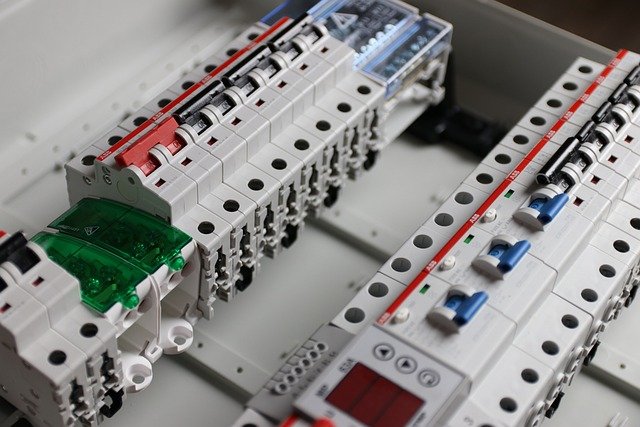Meta Description
Explore the intricate relationship between photocells and circuit breakers in this comprehensive analysis. Delve into the factors that contribute to potential breaker trips, from wiring issues to environmental challenges, and discover proactive measures to ensure the reliability and safety of lighting control systems. Gain insights into troubleshooting strategies and innovative solutions for optimizing performance and energy efficiency. A must-read for electricians, engineers, and anyone involved in the integration of photocells in electrical systems.
Main Body
As the use of automated electric devices keep on surging, photocells have also emerged as one of the most handy equipments. They offer automated hassle free lighting solutions and also ensure the highest possible degree of energy efficiency. By detecting the level of sunlight, these outdoor photocontrol cells make sure the lights are turned on when needed and turned back off when not needed.
However, as their use keep on increasing, there is a buzz about some potential problems associated with their proper integration with electric systems and how they can be used safely without posing any malfunctioning risks. One of the most common concerns about their functioning is, whether or not a photocell can trip a breaker. Let us have a look at the scope of a photocell’s impact on intricate electric systems and whether or not it is capable of impacting it.
Understanding the Scope of a Photocell’s Impact on Breaker

Although the only function of photocells is to turn the light fixtures on and off depending on the ambient light levels, it is more deeply integrated with the electrical system than you might think. Where a photocell on its own cannot affect a breaker, there are several other components within the system that can trigger it. This happens mostly when a fault arises with the connected circuits and other components of the electric infrastructure. Let us have a look at scenarios where a breaker might trip due to different reasons.
Common Reasons behind Tripping of Breaker
- Wiring and Connection problems

One of the most prominent culprits when it comes to tripping of breakers is the defective wiring and faults in the connections linking the photocell with the electric infrastructure. When your wires are exposed to moisture and are not properly insulated, this can cause problems in flow of current. Overheating caused by faulty wiring and loose connections can lead to tripping of breakers in order to mitigate the harm caused by short circuits. The breaker is designed to do so in order to prevent bigger hazards like fire and shocks.
- The Type of Circuitry
Another factor that can cause frequent tripping of breakers is the poor choice of circuitry integrated with photocells. You need to have a clear understanding of the configuration of your electrical system to make sure the selected circuitry associated with photocell is in accordance with that configuration. For example, if the circuit of photocell puts more load on the system than it can handle, and goes to the limits of breaker while drawing current, the breaker will trip to shed this excessive load and avoid unpleasant hazardous incidents.
- Environmental Challenges
In case of outdoor photocell sensors specifically, the environmental factors have a significant role to play. Extreme conditions like high temperatures, lightning, and moisture can lead to electrical issues arising within the system. This leads to abrupt circuit breaks in order to protect the system against hazards.
Measures to Avoid Tripping of Breaker

In order to avoid tripping of breaker due to malfunctioning wires, poorly configured circuitry, or environmental factors, there are several protective measures that can be taken to ensure smooth functioning.
- The first and foremost step you can take is to ensure that there isn’t any loose or poorly insulated wiring and the connections are secure. Good insulation is particularly important when talking about outdoor photocell switches as the wiring will be always exposed to factors like moisture and heat. Here, it is advisable to go for the wiring that has sealants in it along with an insulating cover. Such wiring can provide peace of mind even after years of installation.Besides, go for those photocell which are made with high quality comonents and are compatible to be used with devices that are meant to provide secure and safe connections. For example, the NEMA 7 PIN photocell bases can guarantee the highest hazard protection in the most hazardous of environments.
- Besides, installing Ground Fault Circuit Interrupters (GFCIs) can help protect the system against sudden voltage changes. The same is the case with Surge Protection Devices (SPDs). These devices are highly recommended and a must-have in order to avoid permanent and temporary damage to the system and ensure smooth functioning without circuit breaks.
- Last but not least, proper upkeep of the system is always required. Make sure you keep monitoring your system for any issues arising. Cleaning the photocells and light fixtures from time to time and above all, letting the fixtures dry out completely will help reduce the instances of breaker tripping.
- Besides, equipping your photocells with smart diagnostic systems can help reduce the chances of bigger hazards by informing you about any arising problems beforehand.
Conclusion
In conclusion, while photocells themselves are unlikely to directly trip circuit breakers, their integration into electrical systems introduces complexities and considerations that warrant attention. By understanding the interplay between photocells, wiring infrastructure, environmental factors, and protective measures, stakeholders can proactively address potential issues and ensure the robustness and resilience of lighting control systems. Through diligent planning, meticulous installation, and ongoing maintenance, the synergy between photocells and breakers can be harnessed to achieve optimal performance, energy efficiency, and safety in diverse applications.
References
- https://leaditop.com/product-category/product/photocell-switch-fittings/
- https://www.osha.gov/etools/construction/electrical-incidents/ground-fault-circuit-interrupters#:~:text=The%20ground%2Dfault%20circuit%20interrupter,1%2F40%20of%20a%20second.
- https://new.abb.com/low-voltage/products/surge-protective-devices







